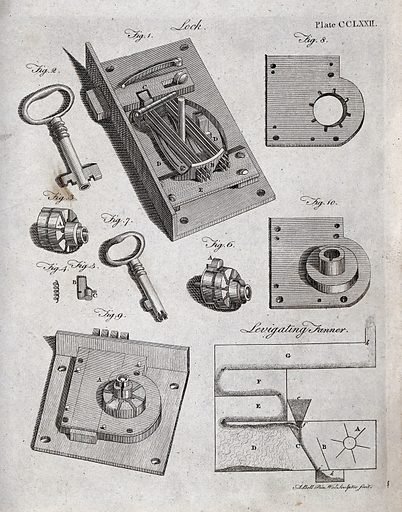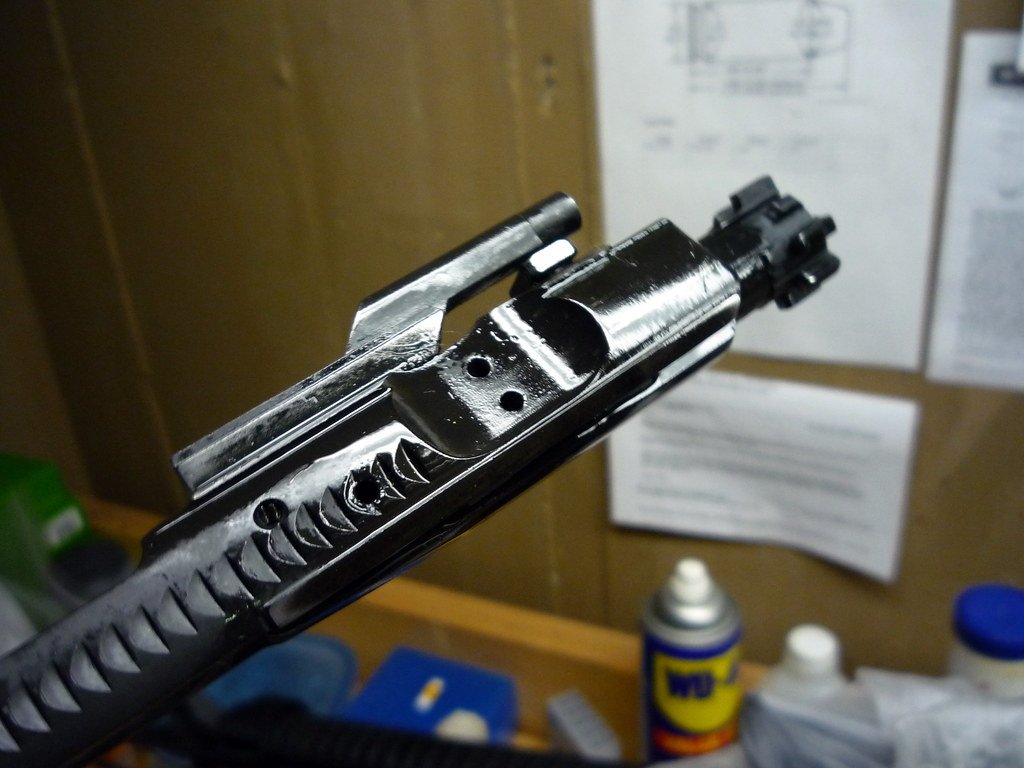When it comes to the intricate world of lock mechanisms, there is one unsung hero that quietly plays a vital role in keeping our belongings secure: the humble retaining pin. Often overlooked and overshadowed by the grandeur of the lock itself, these minuscule yet mighty pins are the unsung engineers that hold the key to our safety. But what exactly is their purpose, and how do they contribute to the sturdy fortress that keeps our valuables protected? In this exploration, we will delve into the fascinating realm of retaining pins, unraveling the secrets they hold within their tiny, unassuming bodies and uncovering the crucial role they play in lock mechanisms. Prepare to be amazed by the hidden complexity and ingenuity of these unassuming yet indispensable components, as we unlock the mysteries of the retaining pins and the mechanisms they help safeguard.
Table of Contents
- Lock Mechanism Basics: Understanding the Purpose and Function of Retaining Pins
- Analyzing the Different Types of Retaining Pins in Lock Mechanisms
- The Significance of Proper Maintenance for Retaining Pins
- Enhancing Security: Key Considerations for Choosing Retaining Pins
- Expert Tips for Troubleshooting Common Issues with Retaining Pins
- Q&A
- In Conclusion

Lock Mechanism Basics: Understanding the Purpose and Function of Retaining Pins
When it comes to lock mechanisms, it’s essential to grasp the purpose and function of every component, and one such critical element is the retaining pin. Serving as a key player in lock security, retaining pins fulfill an essential role in maintaining the integrity of a lock and preventing unauthorized access.
Retaining pins act as a safeguard against lock manipulation or tampering. These small cylindrical devices are strategically placed within a lock cylinder, working in conjunction with various other components to ensure that only the correct key or combination can unlock the mechanism.
Wondering how retaining pins achieve this? Here’s a breakdown of their function and significance:
- Obstruction: Retaining pins are designed to obstruct the movement of the lock cylinder when an incorrect key or tool is inserted. By impeding the rotation of the cylinder, they act as a defense mechanism, preventing unauthorized entry.
- Alignment: When the correct key is inserted, the unique cuts on its blade align with the retaining pins at precise heights. This alignment allows the pins to retract or be pushed up, creating an unobstructed pathway for the cylinder to rotate, subsequently unlocking the mechanism.
- Security Layers: Retaining pins are often used in conjunction with other security measures, such as driver pins, springs, and shear lines. This combination increases the complexity of the lock, making it more resistant to picking, bumping, or other forced-entry techniques.
Now that you understand the purpose and function of retaining pins, you have a deeper insight into the intricate workings of lock mechanisms. Remember, these small but significant components play a vital role in protecting your valuable possessions and maintaining your peace of mind.

Analyzing the Different Types of Retaining Pins in Lock Mechanisms
Understanding the Various Styles of Retaining Pins in Lock Mechanisms
When it comes to lock mechanisms, retaining pins play a crucial role in ensuring security. These small but mighty components come in different types and styles, each serving a specific purpose. By understanding the different variations of retaining pins, you can gain valuable insight into the complexity and diversity of lock systems.
Different Types of Retaining Pins:
1. Tumbler Pins: These common retaining pins are cylindrical in shape and are usually found in pin tumbler locks. They come in various lengths and are stacked one on top of another within the lock core. Tumbler pins are designed to align perfectly with the key’s cuts, allowing the lock to be opened smoothly.
2. Driver Pins: Partnering with tumbler pins, driver pins work in conjunction with them to ensure security. These pins are pushed by springs towards the shear line, preventing rotation of the lock cylinder. They come in different sizes and provide resistance to any unauthorized attempts to pick the lock.
3. Security Pins: As the name suggests, security pins are an added layer of defense against lock manipulation. They feature unique shapes, such as serrated edges or spools, making them harder to move past by a picking tool. These pins add complexity to the lock’s mechanism, significantly increasing its resistance to unauthorized entry.
Choosing the Right Retaining Pin:
When selecting a retaining pin for a lock mechanism, several factors come into play. These can include the level of security desired, the type of lock, and the potential threats the lock will face. It is essential to consider the specific requirements of the lock system to ensure optimum safety.
Overall, understanding the different types of retaining pins showcases the intricate nature of lock mechanisms. By comprehending the functions and characteristics of these pins, you can better appreciate the craftsmanship and complexity behind keeping our belongings secure.

The Significance of Proper Maintenance for Retaining Pins
The role of proper maintenance cannot be overstated when it comes to retaining pins. These small yet critical components play a vital role in many industrial and mechanical applications, such as securing connections and preventing excessive movement. By properly maintaining these pins, businesses can ensure smooth operations, increase safety levels, and enhance the lifespan of various equipment.
One of the key aspects of maintenance is regular cleaning. Over time, dirt, dust, and debris can accumulate on retaining pins, hindering their functionality and potentially causing premature wear. By carefully removing these contaminants using appropriate cleaning agents and tools, businesses can prevent unnecessary damage and ensure optimal performance.
Additionally, lubrication is paramount in maintaining retaining pins. Applying a suitable lubricant can significantly reduce friction between the pins and their corresponding parts, minimizing wear and tear that could lead to costly repairs or replacements. It is essential to use lubricants recommended by the manufacturer to prevent compatibility issues and to ensure efficient operation.
Lastly, thorough inspections should be conducted regularly. This involves checking for signs of wear, such as corrosion, rust, or bending. Any pins showing signs of damage should be promptly replaced to prevent failure and potential accidents. By implementing a routine maintenance schedule and addressing any issues promptly, businesses can avoid costly downtime and uphold operational efficiency.
Enhancing Security: Key Considerations for Choosing Retaining Pins
Retaining pins play a crucial role in enhancing the security of various applications and systems. When it comes to choosing the right retaining pins, there are certain key considerations that should not be overlooked.
Firstly, it is important to consider the material of the retaining pins. Opting for durable materials such as stainless steel or hardened steel can significantly increase the overall security. These materials offer superior strength and resistance to wear, making them more reliable in keeping components securely in place.
Secondly, the design of the retaining pins should be carefully evaluated. Features such as grooves or locking mechanisms enhance the effectiveness of the pins in preventing unintentional disassembly. Look for pins with innovative designs that provide an extra layer of protection against tampering and manipulation.
Lastly, the size and dimensions of the retaining pin should match the specific requirements of your application. Inadequate sizing can compromise the overall security, while an oversized pin may hinder the functionality of the system. Remember to consider factors such as load capacity and tolerance levels when selecting the appropriate pin size.
Incorporating these key considerations into your decision-making process will help ensure that you choose retaining pins that offer optimal security for your application. By prioritizing durability, design, and size, you can enhance the overall system integrity and protect valuable assets.
Expert Tips for Troubleshooting Common Issues with Retaining Pins
When it comes to troubleshooting common issues with retaining pins, it’s essential to have the right knowledge and techniques at your disposal. Here are some expert tips to help you resolve these problems effectively:
- Check for corrosion: One of the most common issues with retaining pins is corrosion, which can cause them to become stuck or difficult to remove. Inspect the pins for any signs of rust or oxidation, and if you find any, use a rust remover or lubricant to loosen them up.
- Ensure correct alignment: Proper alignment is crucial for the efficient functioning of retaining pins. If you notice that the pins are not aligning properly or are not fully engaging, double-check the alignment of the holes they go into. You can use a small hammer or mallet to gently guide the pin into place.
- Inspect for wear and tear: Over time, retaining pins can experience wear and tear due to frequent use or exposure to harsh environments. Inspect the pins for signs of damage such as bending, chipping, or cracking. If you detect any such issues, it is recommended to replace the pins promptly.
Remember, troubleshooting common issues with retaining pins requires patience and attention to detail. By following these expert tips, you can ensure the optimal performance and longevity of your retaining pins.
Q&A
What are retaining pins and why are they important in lock mechanisms?
Retaining pins are small metal components that are crucial in a lock mechanism. They are responsible for holding other components in place, ensuring smooth operation and preventing unauthorized access.
How do retaining pins contribute to the security of a lock?
Retaining pins play a vital role in the security of a lock by providing resistance to external forces and preventing manipulation. They add complexity to the lock mechanism, making it more challenging for potential intruders to pick or bypass the lock.
What happens if retaining pins fail or become misaligned?
If retaining pins fail or become misaligned, the lock’s functionality can be compromised. The lock may become difficult to open or latch incorrectly, potentially leading to a security breach or lockout situation.
Are there different types of retaining pins used in lock mechanisms?
Yes, there are various types of retaining pins used in lock mechanisms, including serrated pins, spool pins, and mushroom pins. Each type offers different security features and adds an additional layer of complexity to the lock design.
Can retaining pins be replaced if they become damaged?
In most cases, retaining pins can be replaced if they become damaged. However, it is important to consult a locksmith or a professional with expertise in lock mechanisms to ensure the pins are installed correctly and the lock’s integrity is maintained.
Do all locks use retaining pins?
While many locks utilize retaining pins in their mechanisms, not all locks use this specific component. Depending on the type of lock, its design, and its intended use, alternative mechanisms or technologies may be employed for securing the lock.
In Conclusion
In conclusion, as we dive deeper into the intricate world of lock mechanisms, it becomes abundantly clear that the role of retaining pins is both vital and often underestimated. Like unsung heroes, these small components bear the weight of security, bridging the gap between a locked and unlocked state. Through their precise alignment and interaction with key cuts, retaining pins create an impressive labyrinth of obstacles – a fortress protecting our valued possessions.
With an unwavering commitment to safeguarding our homes, offices, and cherished belongings, the retaining pins remind us of the intricate dance between security and accessibility. They unlock the doors to our world, granting access only to those who possess the key, while warding off any unauthorized intrusion.
In their simplicity lies their strength, often overshadowed by the daunting complexity of the lock mechanism as a whole. But let us not overlook their significance. While they may be diminutive, their impact is profound. Holding steadfast in the face of immense pressure, retaining pins form an unyielding line of defense against unwanted trespassers.
From the humble beginnings of their invention to the diverse range of locks they serve, retaining pins have woven their way into the very fabric of our lives. They symbolize the delicate balance between trust and vulnerability, reminding us that true security is a culmination of precision engineering, human ingenuity, and unwavering commitment to excellence.
So, the next time you turn the key to unlock a door – whether it be your home or office – take a moment to appreciate the silent heroes within. The retaining pins that stand guard, uncomplaining and seemingly ordinary, silently upholding the bonds of trust and protecting the sanctity of our private spaces.
As an affiliate, my content may feature links to products I personally use and recommend. By taking action, like subscribing or making a purchase, you’ll be supporting my work and fueling my taco cravings at the same time. Win-win, right?
Want to read more? Check out our Affiliate Disclosure page.